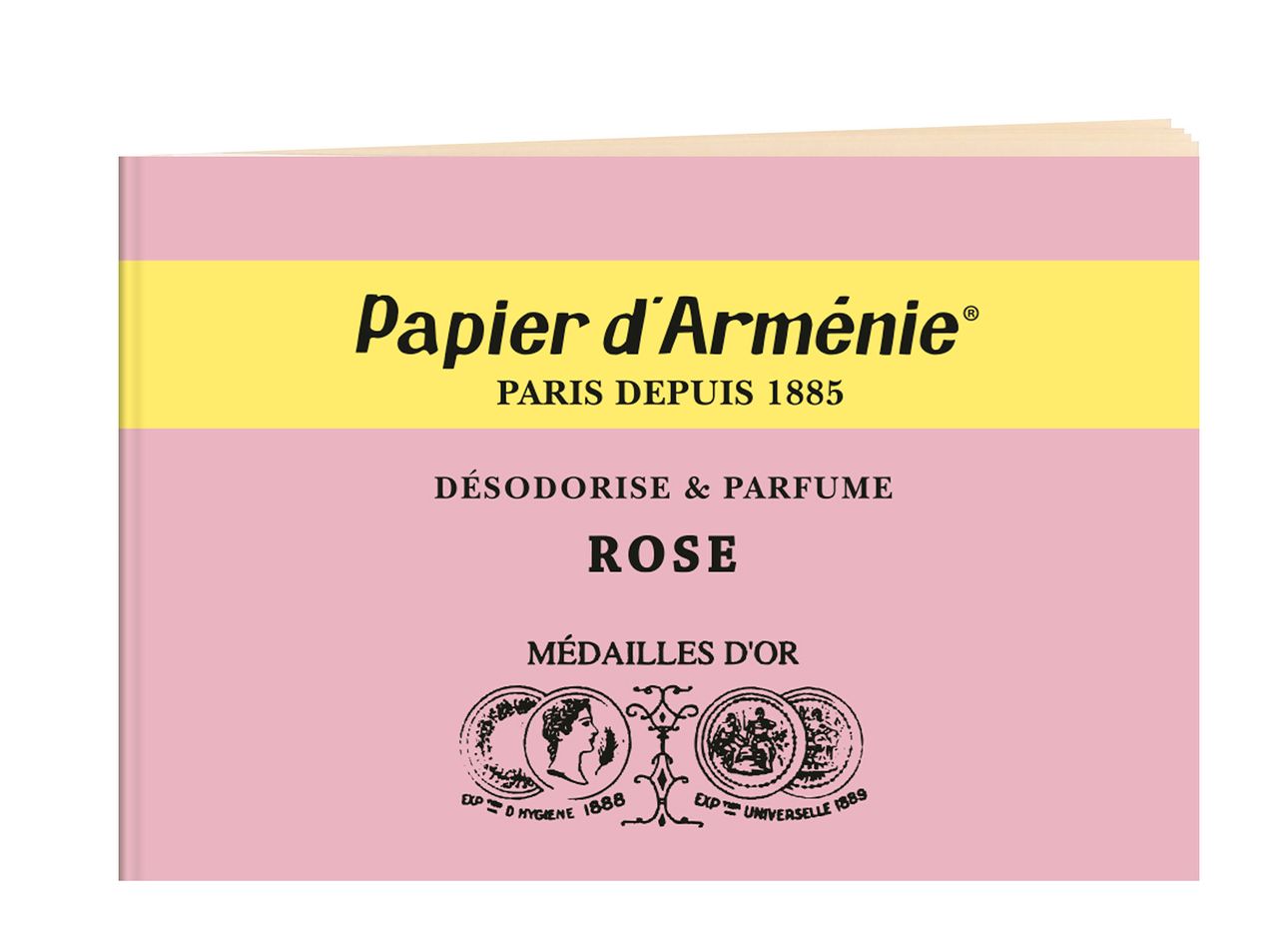
These Scented Strips of Paper From France Are the Ultimate Deodorizers
It’s been two years, three months, five days and a few hours since I last set foot in a five-star Paris hotel room (but who’s counting?). However, any time I want a whiff of those treasured, pre-pandemic memories, I reach for a palm-sized book of scented papers from the French company Papier d’Arménie. After tearing off a thumb-length strip, I fold it up like an accordion, place it on a ceramic dish along the paper’s thin edge, and strike a match to ignite it. Usually, I don’t even expend a breath blowing out a flame, since there typically is none. These tiny-but-mighty deodorizers burn out in less than three minutes—quicker than incense—but I find the subtle, powdery fragrance lingers considerably longer than even the best candles, enveloping me in luxurious scent distinctly reminiscent of that beloved Parisian hotel for hours—all for the recession-proof price of around 27 cents per strip.
A favorite tool of my grandmother, who burned the papers to rid her kitchen of cooking odors (and also tucked them into winter-storage bins to keep her cashmere sweaters smelling elegant), these humble home goods have a long history. On a trip to Armenia, in 1885, a French chemist named Auguste Ponsot noticed locals disinfecting their houses by burning benzoin resin, a yellow-hued sap secreted from the trunk of Styrax trees, to scent and disinfect their homes with its naturally warm balsamic notes that are reminiscent of vanilla and cinnamon.
Seduced by this effective, nature-derived practice, Ponsot began importing benzoin resin to France. Together with pharmacist Henri Rivier, they liquefied the resin in alcohol, added fragrance to create a longer-lasting and more sophisticated aroma, and developed a procedure that enabled the paper, when infused with the solution, to burn without producing a flame. Word spread: first among French pharmacists, who recommended their nascent Papier d’Arménie brand during flu epidemics, then as the strips began appearing at trade fairs, including the 1900 Paris Exposition.
More than a century later, with Rivier’s great-granddaughter Mireille Schvartz at the helm, Papier d’Arménie still operates out of its original workshop in the Paris suburb of Montrouge, where eight artisans produce the perfumed papers by hand in a six-months-long process that now begins with a higher-quality resin sourced from Laos. In 2006, the company collaborated with celebrated French perfumer Francis Kurkdjian (the nose behind dozens of best-selling scents including Le Mâle by Jean-Paul Gaultier and Elizabeth Arden’s Green Tea) to create the woodsy Arménie, which emits notes of myrrh, sage, lavender, and cedar. Rose, developed in 2009, is made of flowers imported from Turkey and Iran.
While my French friends profess loyalty to the original version—namely for its vanilla aroma, which is famously capable of overpowering even the cigarettes they smoke—Kurkdjian’s recent additions have found popularity among younger customers, who may have seen the product in boutiques, such as the Brooklyn home accessories shop Flotsam + Fork, or on social media. (Influencers have spread word of the papers’ efficacy in unburned form, which can be used to scent everything from old books to lingerie drawers to cat-litter boxes.)
If you’re looking for other scents, there are several options. Italians have their own, virtually identical version produced by a company called Carta Aromatica d’Eritrea, which produces paper strips that it credits to a pharmacist from Piacenza. Well worth the investment are the thicker, slower burning strips from Italy’s legendary Santa Maria Novella dispensary, beloved for their powerful notes of frankincense and myrrh.
Personally, though, I’m more than content with the French originals. I often carry a packet in my handbag, so I can literally bury my nose in case of any sudden, unpleasant olfactory encounters on the subway or aboard a plane. I can also set the paper alight in any hotel room, creating an aromatic continuity in a space that might otherwise share nothing in common with my last Parisian holiday.